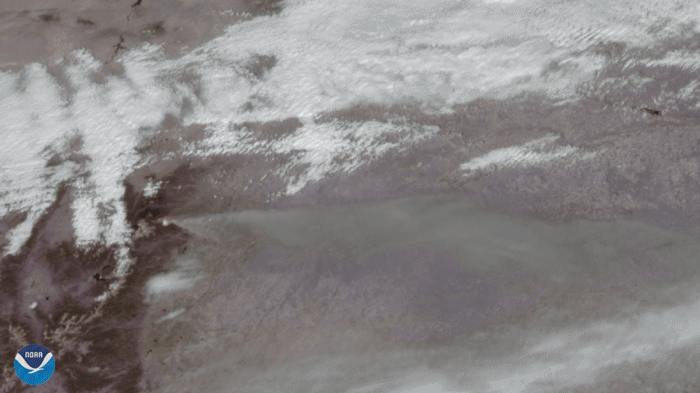
On October 14, 2020, the GOES-East satellite viewed the Cameron Peak Fire near Ft. Collins, CO, which has been burning for two months. To visualize the current blaze, the satellite utilized a combination of band 2 from its Advanced Baseline Imager (ABI), which has the finest spatial resolution of all 16 ABI bands and helps identify smaller meteorological details, as well as GeoColor and Fire Temperature products to show an approximation of daytime True Color and fire heat intensity.
First ignited in the Arapaho and Roosevelt National Forests, the fire has spread to over 256 square miles as of Thursday morning, making it the largest fire in Colorado’s history. Authorities are still investigating its original cause; as of Oct. 15, only about half of the fire’s total area has been contained. The second-largest wildfire, the Pine Gulch wildfire, topped out at 217 square miles in August of this year, breaking a previous record held by the Hayman Fire in 2002.
High sustained winds of 20–30 miles per hour from mountain wave activity, along with critically dry foliage and other fuels, have accelerated the spread of the Cameron Peak Fire over the course of Wednesday. The National Weather Service office in Boulder has issued an Air Quality Alert for 10 counties in northeastern Colorado, including Larimer County, where the majority of the fire is located.
The GOES-East geostationary satellite, also known as GOES-16, keeps watch over most of North America, including the continental United States and Mexico, as well as Central and South America, the Caribbean, and the Atlantic Ocean to the west coast of Africa. The satellite's high-resolution imagery provides optimal viewing of severe weather events, including thunderstorms, tropical storms, and hurricanes.
